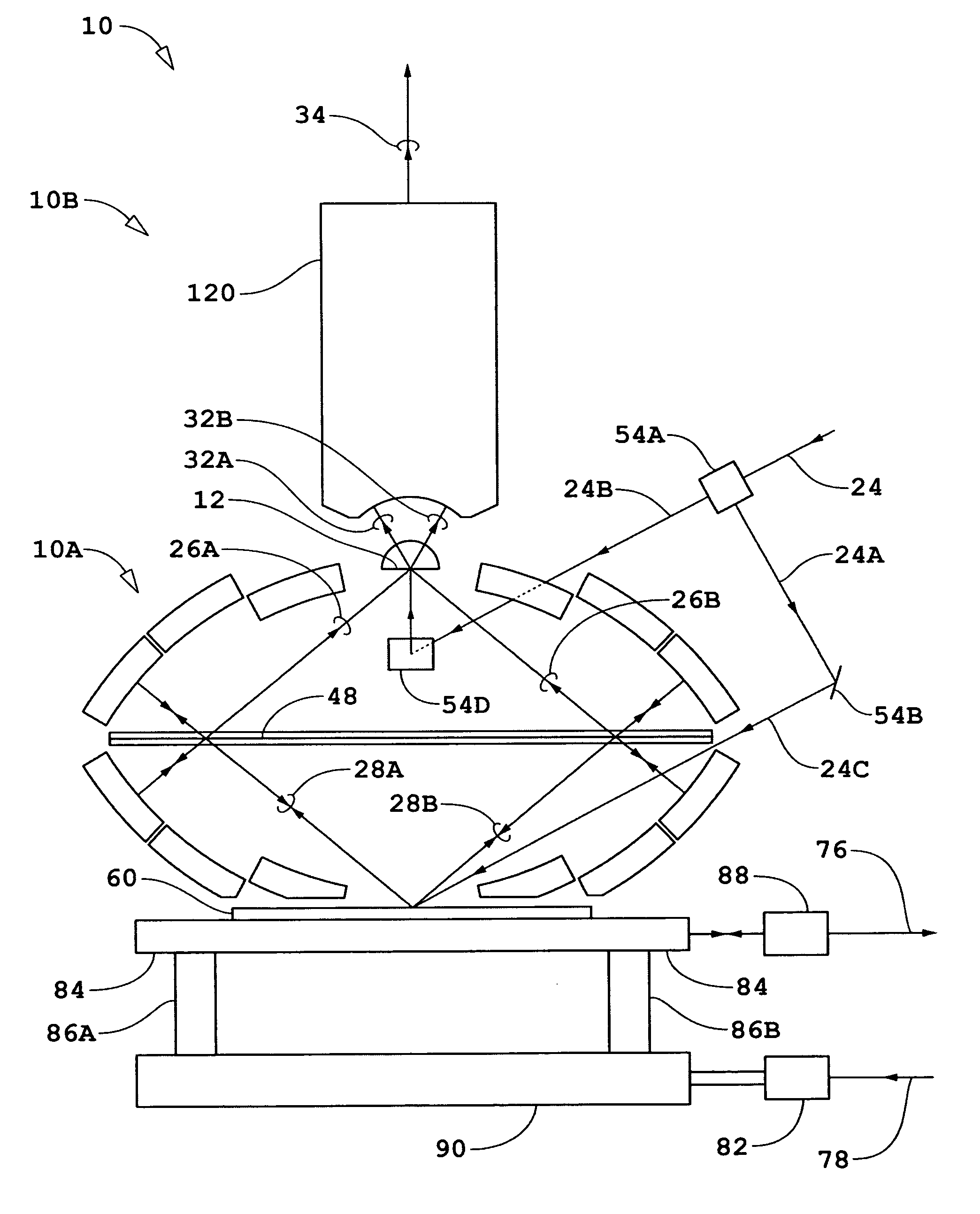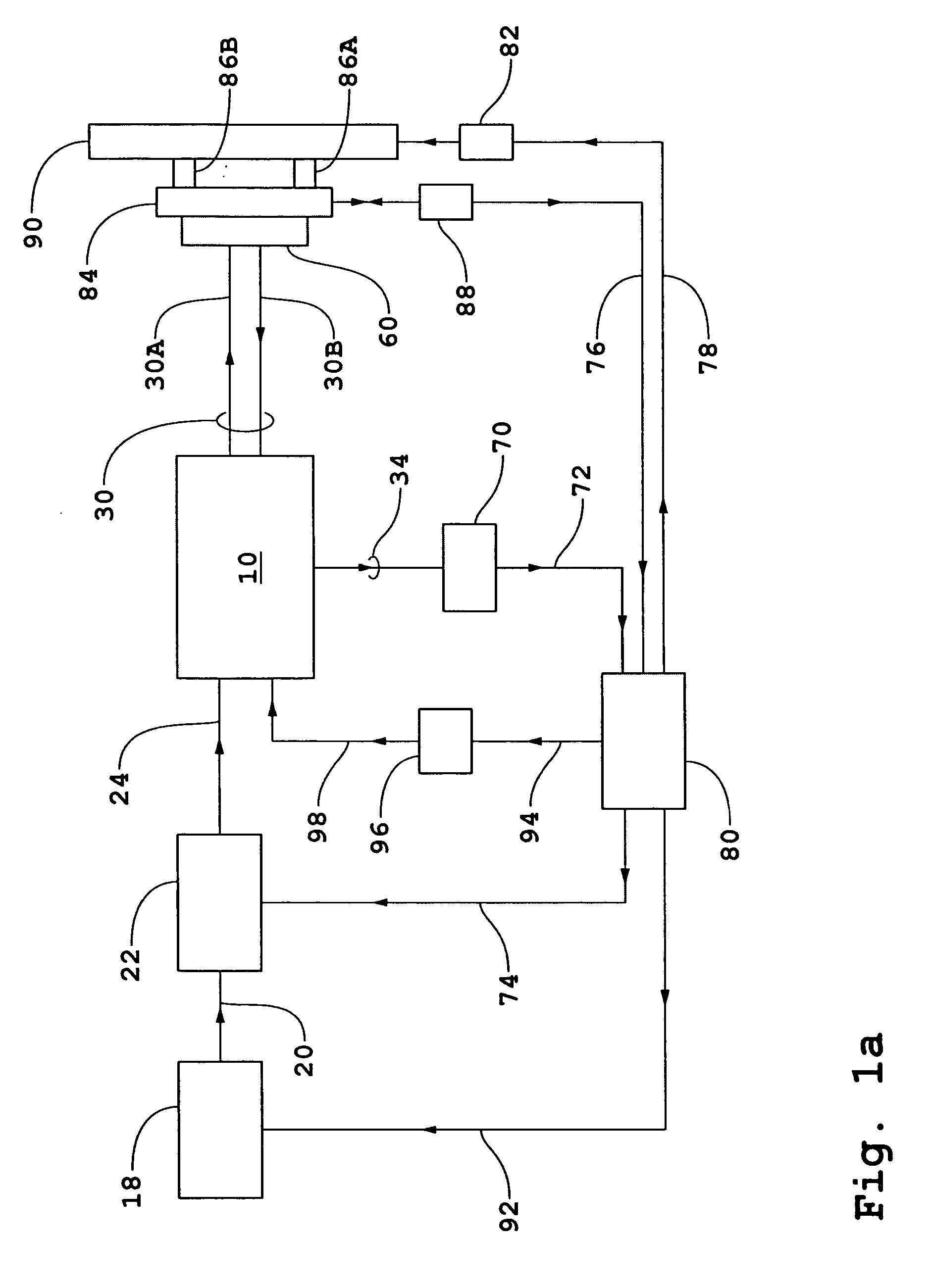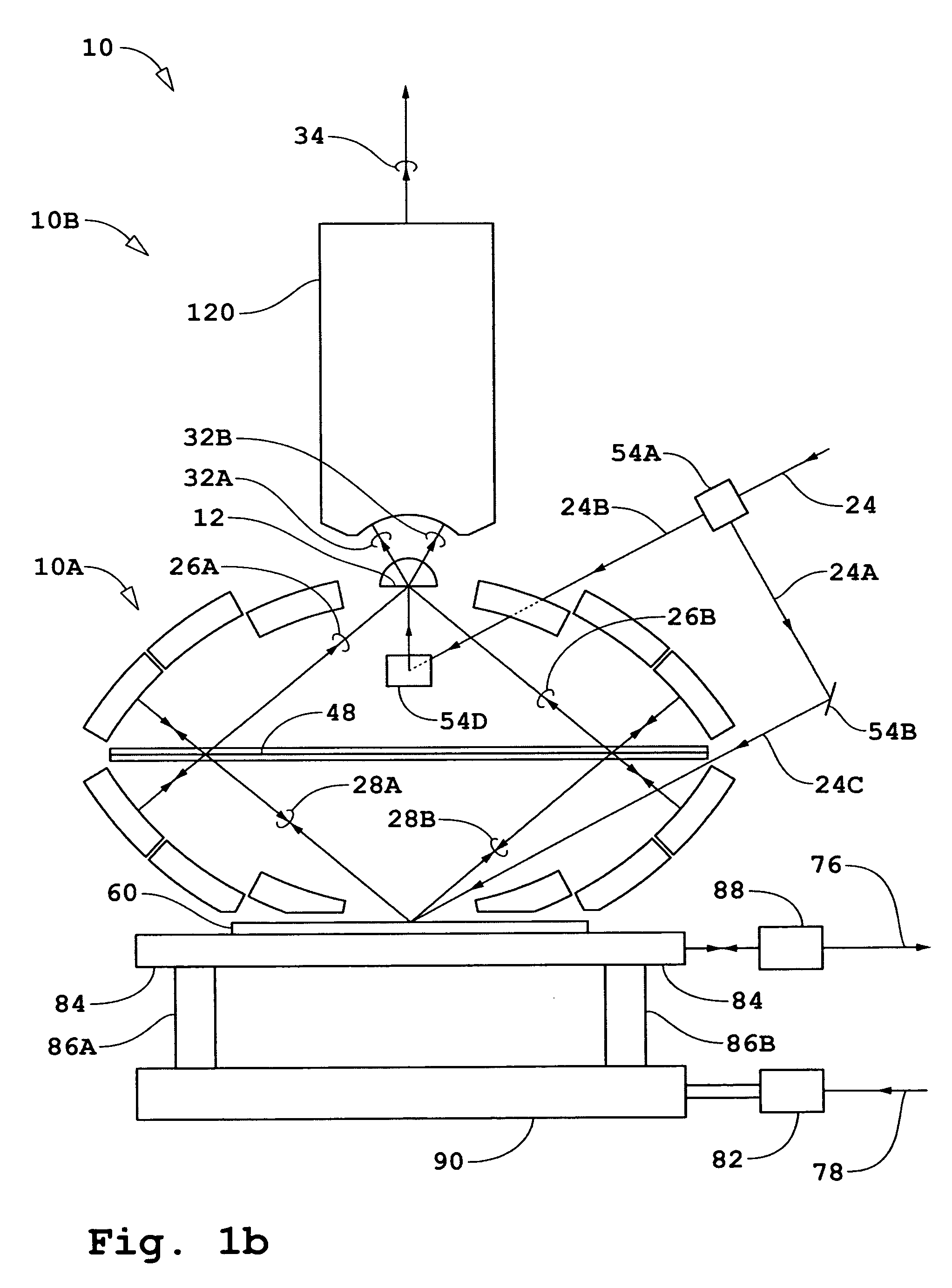Catoptric imaging systems comprising pellicle and/or aperture-array beam-splitters and non-adaptive and/or adaptive catoptric surfaces
- Summary
- Abstract
- Description
- Claims
- Application Information
AI Technical Summary
Benefits of technology
Problems solved by technology
Method used
Image
Examples
Embodiment Construction
[0072] A general description of embodiments incorporating the present invention will first be given for interferometer systems wherein either a N-dimensional bi- or quad-homodyne detection method is used where N is an integer. Referring to FIG. 1a, an interferometer system is shown diagrammatically comprising an interferometer 10, a source 18, a beam-conditioner 22, a detector 70, an electronic processor and controller 80, and a measurement object shown as substrate 60. Source 18 generates input beam 20. The interferometer system shown in FIG. 1a is for the case of an imaging system operating in a reflecting mode to measure properties of fields reflected / scattered by substrate 60. For the case of operation in a transmission mode, a portion of beam 24 split off as a measurement beam is incident on substrate 60 from the backside of substrate 60 such as shown diagrammatically in FIG. 2a. Source 18 is preferably a pulsed source that generates beam 20 with a single frequency component. B...
PUM
 Login to View More
Login to View More Abstract
Description
Claims
Application Information
 Login to View More
Login to View More - R&D
- Intellectual Property
- Life Sciences
- Materials
- Tech Scout
- Unparalleled Data Quality
- Higher Quality Content
- 60% Fewer Hallucinations
Browse by: Latest US Patents, China's latest patents, Technical Efficacy Thesaurus, Application Domain, Technology Topic, Popular Technical Reports.
© 2025 PatSnap. All rights reserved.Legal|Privacy policy|Modern Slavery Act Transparency Statement|Sitemap|About US| Contact US: help@patsnap.com



